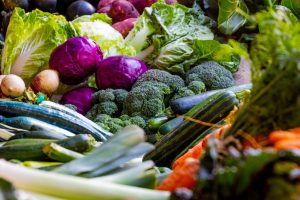Ready to Grow while you stay at home?
Conservation Gardening ideas for your Covid-19 Victory Garden!

So, you are staying safe at home and looking for productive projects around the house, and your thoughts turn to finally getting that backyard veggie garden in shape. Awesome!
Many folks have used the extra time at home to establish gardens much like our parents and grandparents did during WWII. As you put seed to soil, here are some conservation-minded ideas to keep in mind!
First, make sure you select crops that are suited for your site and soil. Nothing is more frustrating than spending a lot of time and sweat establishing a garden and then seeing no results. Remember that most vegetable crops require full sun, and while it can be tempting to put the garden in an area where the turfgrass didn’t grow too well anyway, there’s probably a reason it wasn’t happy there either!
Second, you want to pick a flat or gently sloping site that isn’t saturated with standing water. If you look up your property on www.loudoun.gov/weblogis, and click on the soils, hydric soils, and topography layers, this should give you a good idea if your site is “garden friendly.” Hydric soils are poorly drained or have a high water table, making them not ideal for many vegetable crops. Too steep a slope can mean erosion problems and loss of topsoil due to water erosion once you plant. Establishing a garden is definitely a case for measuring twice and cutting once (into the soil that is!).
Speaking of picking the right site, it is important to do a soil test. A soil test allows you to know what the existing pH and fertility of the soil at your selected garden location. The soil lab at Virginia Tech is still open, although with the reduced staffing the time it takes to get results can be a little longer than usual. Although nowhere near as accurate, there also at home kits you can buy to give you a ball park to start on this data. This will keep you from spending money you don’t have to on fertilization and liming. For smaller scale plots doing raised beds and adding purchased soil can be an option, but remember, you will eventually need to test that soil too in the years to come!
Watch a soil test demo here! Pick up a soil test kit from the Loudoun County Extension Office located at 750 Miller Dr., SE, Suite F-3, Leesburg, VA. (Check current hours due to Covid-19).
Once you have got a nice sunny spot, with soil in the right pH range, what next? Think like a conservationist farmer! After you have planted your crop, utilize straw or mulch hay in between the rows to help suppress weeds, reduce erosion, and hold moisture within the soil. These will also help provide organic matter for next year’s crop. Speaking of next year, this fall, do not forget to plant a cover crop on your garden to hold nutrients and prevent erosion. Rye, clover, and radish make good cover crops to establish.
One final note, some folks love to run the garden tiller! A tiller can be a great tool, but as with any tool, if it is overused, or used in the wrong way, it can cause trouble. Just like a farmer utilizing no-till or minimal till farming, make sure you are not using the tiller excessively. This can destroy soil structure, making it more difficult for roots to establish and earthworms to provide important cavities for water and nutrients to travel through the soil. Tillage can also cause soil compaction in the long term as it churns the soil up, but breaks up the “cottage cheese” like structure and allows everything to settle back tightly together, rather than the “sponge like” structure that’s ideal for plant growth. So, keep the tilling to once or twice a year at most. You can even remove almost all tillage by starting your own seedlings in seed trays and transplanting directly into a straw mulched bed.
If you get stuck, or have questions, Virginia Cooperative Extension has extensive resources available to help most garden issues like disease or pests. Remember that many diseases and some pests can be avoided by laying out the garden correctly with the correct irrigation and site selection, and also making sure beneficial insects are welcomed to help pollinate and control pests.
So, get out there on the land (even if it is just the 10×10 foot patch in your backyard!). Just don’t forget to keep conservation in mind!
-Chris Van Vlack
